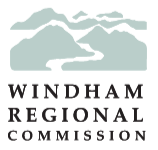Land Use Policies
-
Direct new growth, including housing, commerce, public infrastructure, industry, and community facilities, into appropriate land use designation areas, such as Regional Centers, Villages, Industrial areas, Commercial Nodes and Corridors, and Resort Centers.
-
New growth, in-fill development, and redevelopment in Regional Centers, Villages, and Hamlets shall give attention to the type and scale of the existing development forms and patterns in these areas in order to keep these centers culturally, socially, and economically viable.
-
In order to support climate resilient communities, new development and redevelopment in identified flood hazard, fluvial erosion, and river corridor protection areas should be avoided. If new development or redevelopment occurs in these areas, it shall not exacerbate flooding and fluvial erosion.
-
Efforts to conserve lands for the purpose of stormwater and floodwater attenuation, as well as for aquifer recharge, shall be supported by the Commission.
-
Preserve the historic and architectural character of the region through the reuse and repurposing of viable existing structures and retaining historic development patterns, densities, and characteristics.
-
Encourage the siting of housing in Regional Centers and Villages, or within areas in close proximity along major roads and transit routes.
-
Support the transformation of existing Commercial Nodes and Corridors into areas that provide a greater mix of uses, increased density (when wastewater infrastructure is available), improved traffic circulation and pedestrian safety, and improved architectural and site design.
-
Concentrate outdoor recreation resort expansion and secondary growth to minimize the trend toward dispersed and sprawl development. Outdoor recreation resort development shall be reviewed as part of a development master plan that has received positive findings on critical natural resource and other cumulative growth issues before any individual development projects are approved in order to assess and address cumulative impacts of the development.
-
Develop, maintain, and expand public infrastructure, including water and sewer systems and pedestrian and bicycle facilities, to promote and enable greater densities in development centers, including Regional Centers, Villages, Resort Centers, Industrial sites, and growth areas as identified by town plans. Support the relocation or development of new village centers where appropriate.
-
Develop and expand Hamlets in a form that maintains traditional density and residential settlement patterns.
-
Ensure the continued viability of industrial and commercial enterprises by supporting growth and expansion in Industrial areas while reducing and mitigating potential land use conflicts and external impacts of industrial activities.
-
Development in Rural Residential and Productive Rural areas shall be sited and designed to minimize conversion and fragmentation of forest and agricultural lands and protect the existing rural character. Proposed subdivisions adjacent to Villages and Regional Centers shall extend traditional neighborhood development patterns to the greatest extent feasible.
-
Strongly discourage all development in Resource Lands for purposes other than forestry and agriculture. Any land development in Resource Land shall be sited and designed to minimize the fragmentation of Priority Forest Blocks and Habitat Connectors, and minimize adverse impacts on the natural resources and ecological services they provide, including wetlands, flood plains, river corridors, rare, threatened, and endangered species, significant natural communities, elevations above 2,500 feet, and slopes steeper than 25 percent.
-
Require that the benefits of any mitigation associated with projects in the Windham Region and being reviewed under Act 250, be directed to the Windham Region.
-
All development shall conform with the land use designation within which it falls as shown on the Future Land Use Map and described in the narrative section of this plan. Permit applications, including Acts 250 and 248, shall demonstrate conformity with the regional land use designation.
